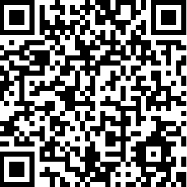Right to Apply for Patent
2008/10/24 TaiwanOn September 7, 2005, the Taiwan Intellectual Property Office rejected the opposition filed by Loi & Tran Pty. Limited against patent issue no. 227529 with the title of “Structure Improvement of Screws of Plastic Skateboard Use”. As the subsequent appeal was also rejected by the Committee of Appeal of the Ministry of Economic Affairs, the appellant filed an administrative lawsuit with the Taipei High Administrative Court. The Court found that the submitted evidence could prove neither the publication date of the appellant’s prior art to be earlier than the filing date of the opposed patent nor could the evidence prove the opposed patent copied the disputed technology from the appellant’s prior art; and the witnesses’ testimonies are all circumstantial with regard to the identification of the original inventor of the opposed patent. Therefore, the administrative lawsuit was rejected.
The Court stated that although the filing date of the opposed patent was July, 5, 2001, and the priority date of appellant’s patent applications filed in the United States, China and with WIPO was May 30, 2001, it merely proved that the appellant has filed the patent applications, the content of the two patents are not identical. As the appellant could not prove the disputed patent was released to the public by them earlier than the filing date of the opposed patent, the appellant’s claim of the opposed patent copied the disputed technology from the appellant’s prior art could not be established.
The Court also noted that the submitted evidence of the sales invoices and quotations exchanged between the appellant and the opposed party only indicated the model number of “U2” of the traded products, but the product samples submitted to the court by the appellant consisted of 9 types of screws without any model number indication. Even though 1 of the 9 said samples had the structure similar to that described in the opposed patent, this said 1 sample with similar structure could not be proved to be the traded “U2” product.
The Court also explained that the witnesses’ testimonies were either imprecise about the identification of the original inventor of the opposed patent or provided by the parties related to the opposed party without any supporting evidence to affirm the authentication.
The Court rejected the appellant’s claim.
Organized and Translated by Eunice Yang
International Affairs


